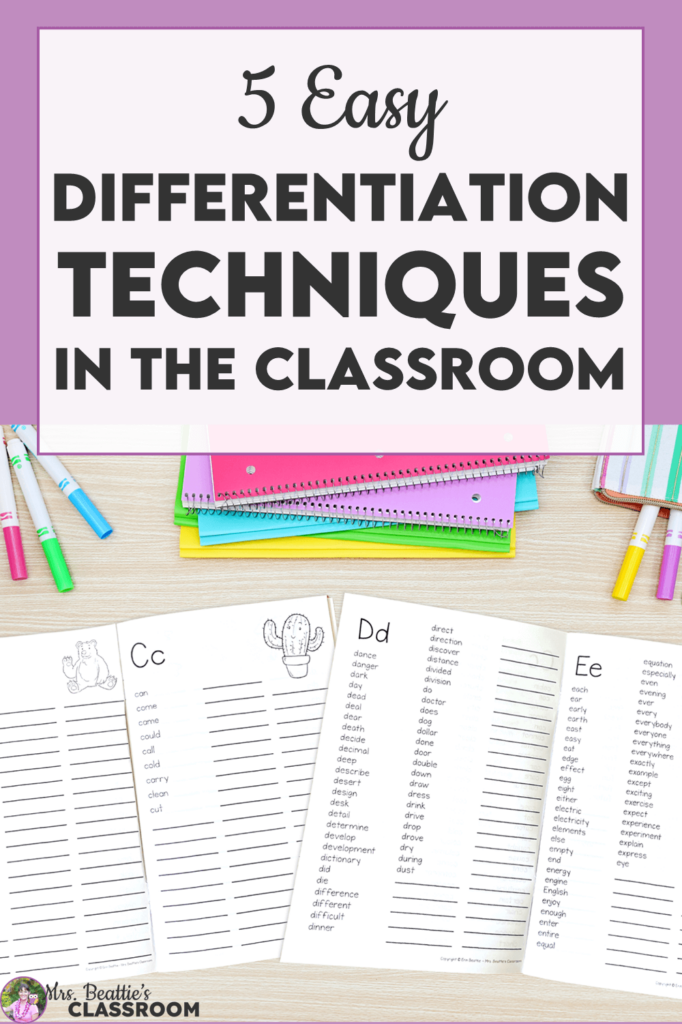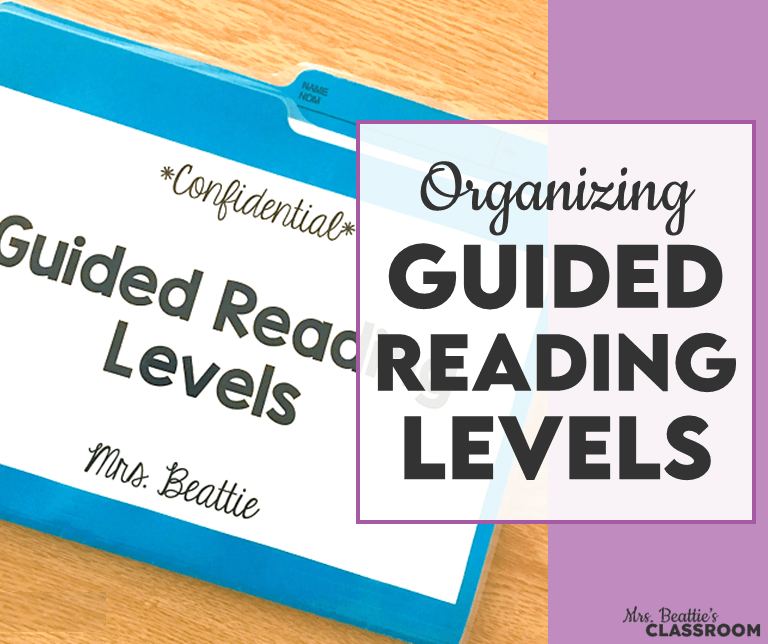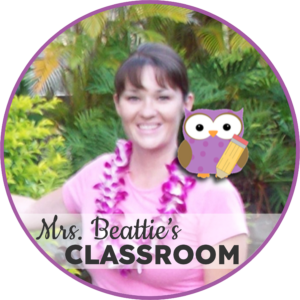Differentiated instruction sounds daunting if you don’t know where to start, but differentiation techniques in the classroom can actually be very simple with the right resources and strategies! Here are my five favorite ways to differentiate in the classroom.
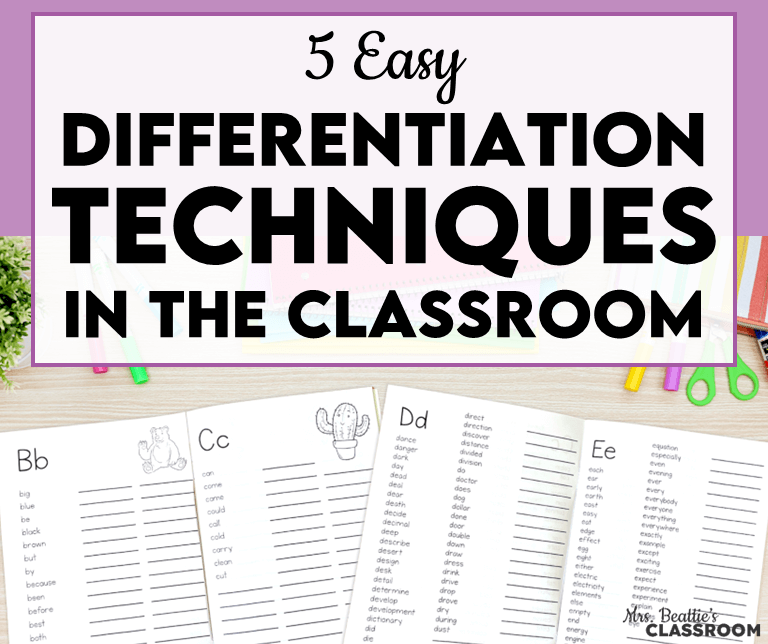
According to Carol Ann Thomson, all differentiation techniques in the classroom fall into four categories: content, process, product, and learning environment. While there are hundreds of small ways you might differentiate for the varied abilities in your classroom, I have some favorite strategies that are super easy to accomplish.
Here’s a look at how you can differentiate using different text, by scaffolding, by using similar design, using similar numbers, and by using direct support.
Differentiate Using Different Texts
One significant area where teachers need to use differentiation techniques in the classroom is in language arts class. Consider teaching reading skills and strategies such as questioning, predicting, activating prior knowledge, schema, main idea and details, visualizing, point of view, summarizing, and making connections.
Students need not work with the exact same text to learn about and practice these skills.
In my 25+ years of experience, having students work with a “just right” text they’ve self-selected based on personal interest will make them more engaged and on task with reading activities.
The power of choice is HUGE!
After evaluating my students and noticing gaps I need to target, I will bring groups of students to my guided reading table with their preferred text and teach them these skills in a general way. We focus on the process instead of the specific content of the texts.
For this reason, I create or choose resources that can be used repeatedly with any text. I love that I can give all my students the same task no matter what text they are reading to have them practice the skills I’m teaching!
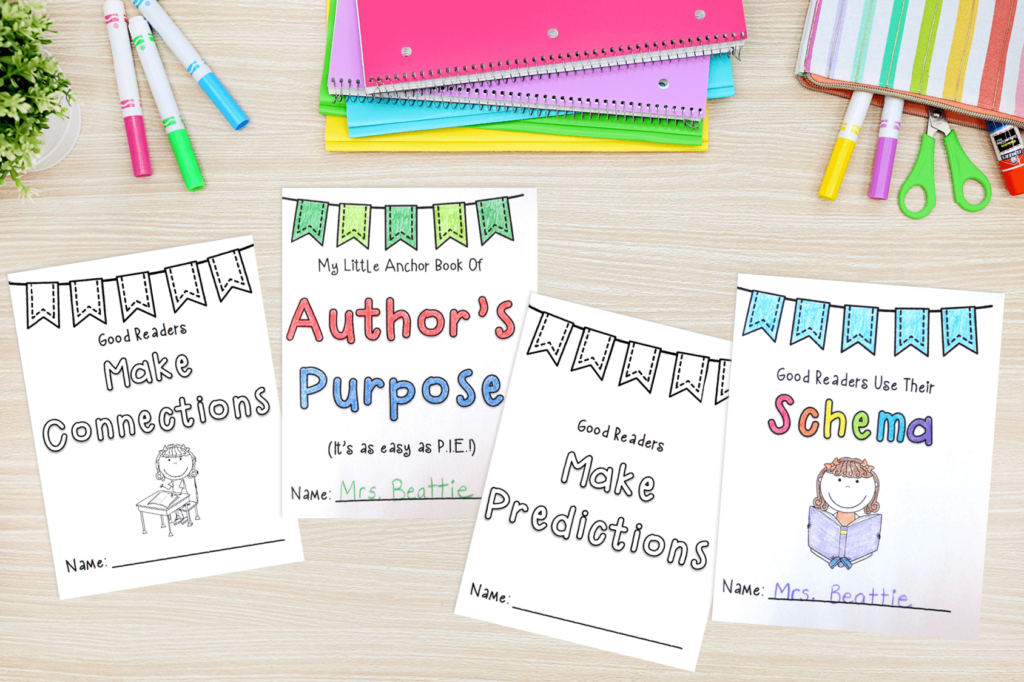
I created this series of fun reading mini-books to teach comprehension strategies, text features, text structure, genre, and story elements. This way, my students could practice their new skills using any text. They are available in my TPT store and my Canadian shop.
Differentiate By Scaffolding
Another excellent differentiation technique in the classroom is scaffolding. Scaffolded instruction is a gradual release of responsibility from teacher to student. It is a way of supporting students until they can do the task independently.
During scaffolded instruction, the teacher begins using a model in an “I Do” format. The teacher completes the task as an example to the students of how it should be done and what should be included.
The teacher and students then co-construct the task in a “We Do” format. With their help and input, the teacher creates the final product.
Finally, the students work independently in a “You Do” capacity. Now, it is their turn to work through the process of completing the final task.
Scaffolding can be even more simple than this. In my classroom, while some students might copy information from the board or write complete sentences to respond to a question, others might work on filling in blanks with key vocabulary.
Providing alternative formats, such as fill-in-the-blanks, multiple-choice, and matching concepts, in your classroom assignments ensures that all students can access the content regardless of their ability level.
Differentiate Using Similar Design
Another of my favorite differentiation techniques in the classroom is keeping activities I’ve differentiated visually similar so students don’t notice they’re working on something different.
In the junior and intermediate grades, there’s nothing more damaging to a student’s self-confidence than realizing they’re working on activities many grade levels below their peers. Modifying resources at this grade level can be challenging because primary content often looks “babyish.”
My student personal dictionaries are vastly different for my lower-level writers and upper-level writers, but I use identical covers on these so they all look the same. My students rarely recognize that their resources are not the same as those of their neighbors, even though they are working with very early vocabulary and sight words.
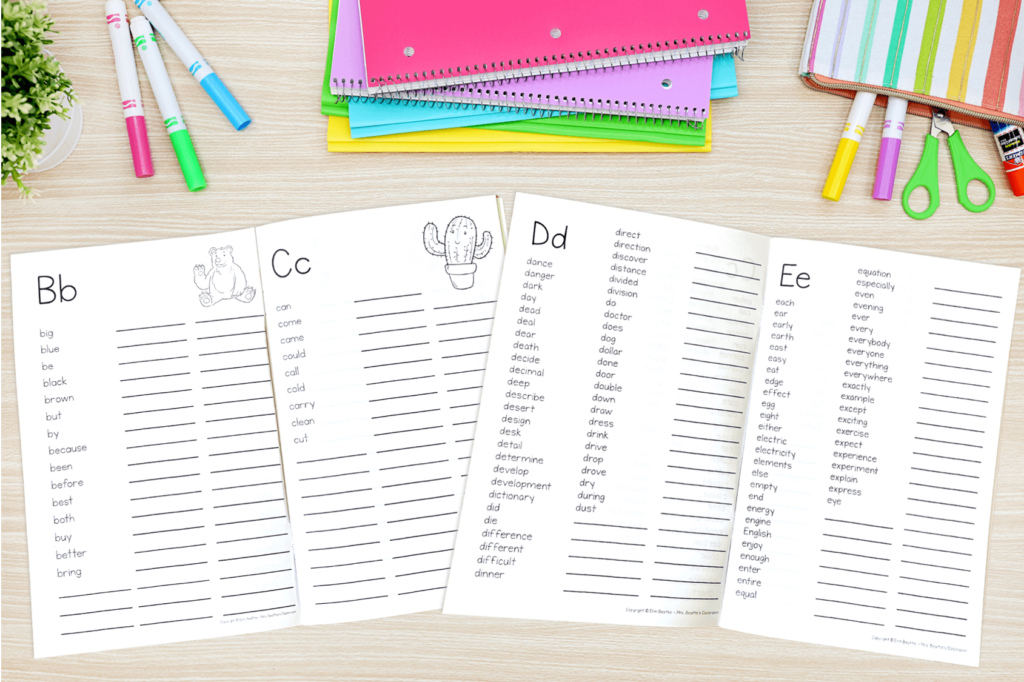
These printable personal dictionaries are available in my TPT store and my Canadian shop.
Differentiate Using Different Numbers
Adjusting the numbers students work with is a way to easily differentiate some topics in math. This is particularly true for concepts involving place value and operations.
Students might all play the same place value games or puzzles, for example, but the numbers they work with fall into different ranges. When completing place value activities, one group of students might be working on much smaller numbers than the rest of the class. When working on the area of rectangles, students might be expected to use the L x W formula to calculate the area with two-digit numbers or only one-digit numbers.
My math centers use different numbers and I’ve also maintained a similar design across all the sets, once again allowing for subtle differentiated instruction. You can see this below in the examples of my place value to 100 and place value to 10,000 resources:
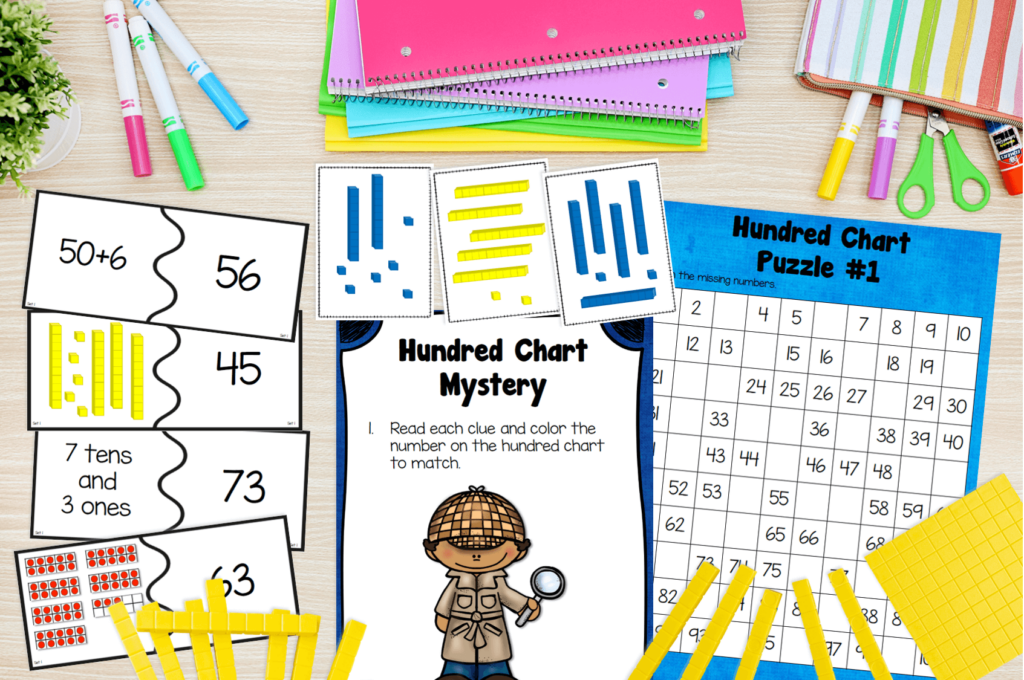
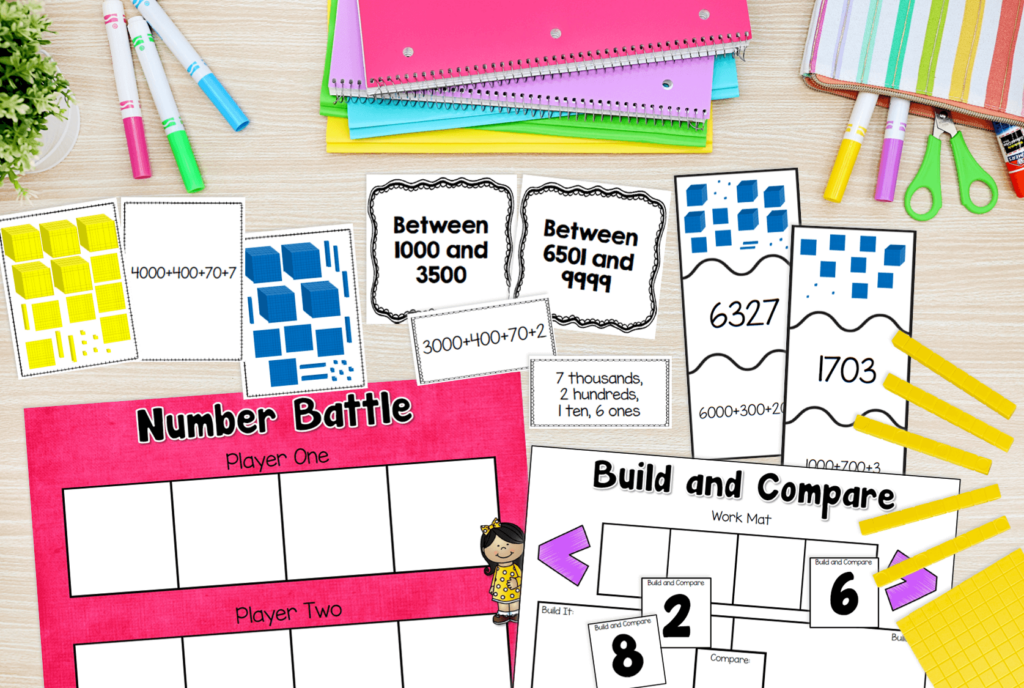
Students using these resources wouldn’t necessarily notice a major difference between what they’re working on and what their classmates are working on. These math centers are available in a full-year bundle in my TPT store and my Canadian shop and in French in my TPT store and my Canadian shop.
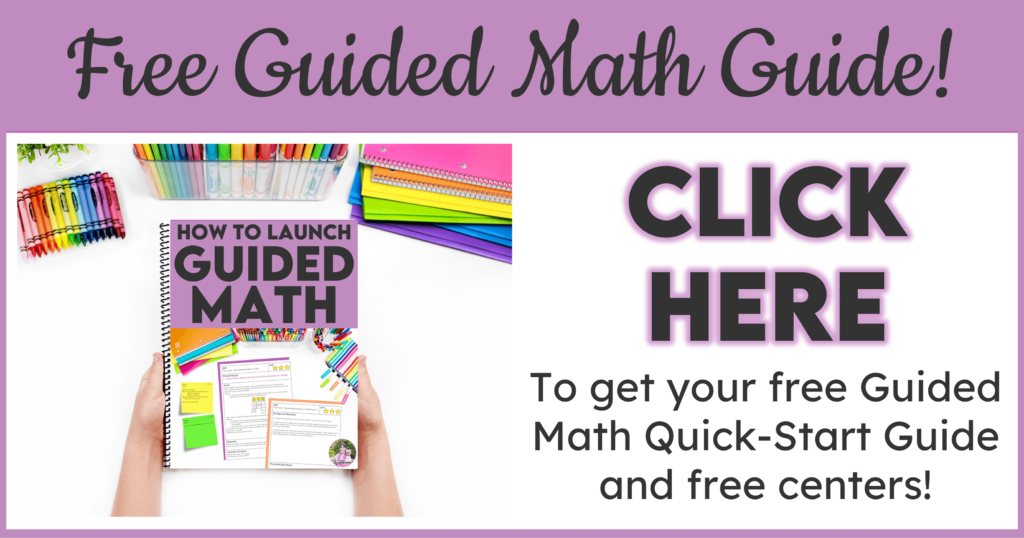
Differentiate Using Support
There’s no written rule, at least not in the Ontario curriculum I am bound to in my job, that says every student must get an equal amount of your time.
While we know that all students deserve focused attention from the teacher, sometimes we need to pull a particular group more often than another.
Sometimes, we’ll see our stronger students more often to provide extra challenge, and more often, we’ll see our struggling students more frequently to provide additional support.
Both are acceptable, and both are valid differentiation techniques in the classroom.
I love teaching using small group lessons and have built an entire guided math program around this. You can read more about that here:
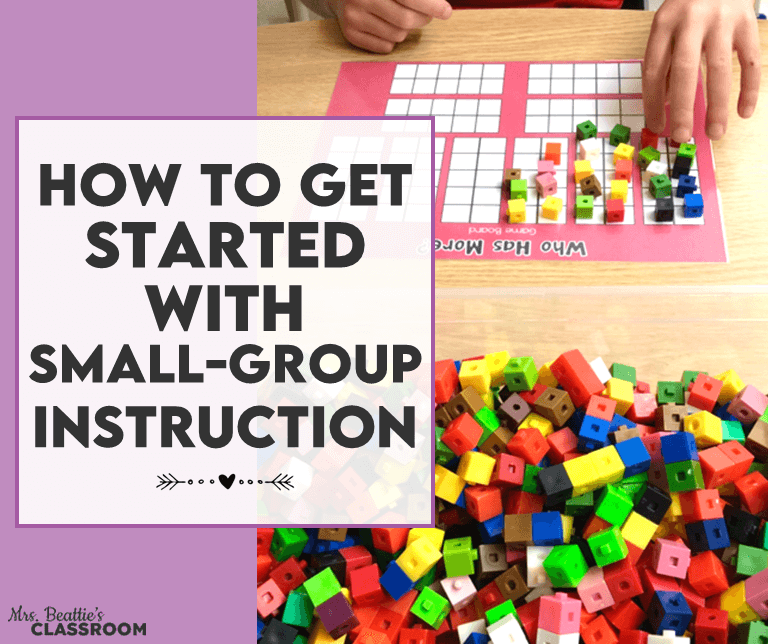
If you’d like to continue reading about differentiation techniques in the classroom, you might also be interested in these posts:

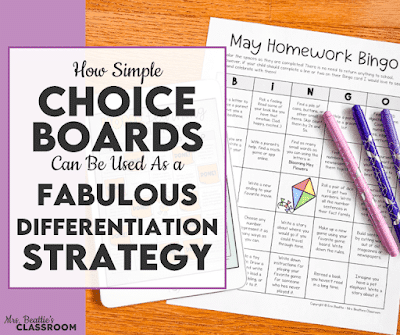
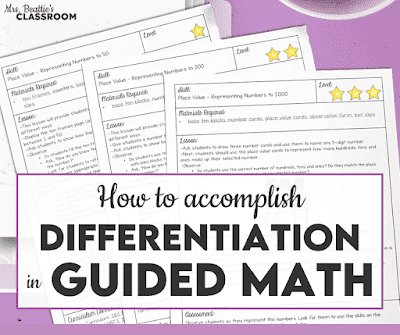
If you’ve enjoyed this post, please share it on social media or pin it on Pinterest:
